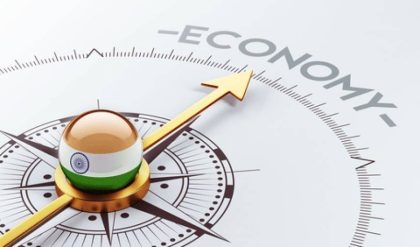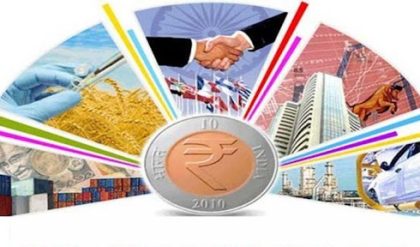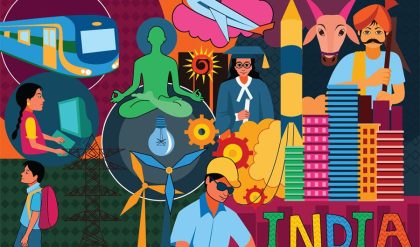· About two-third of the total population in India lives in villages; so, integrated rural development will lead to the nation’s development.

Credit and Marketing in Rural Areas
· In 1969, Indian government adopted social banking and multi-agency approach to meet the requirements of rural credit.
· In 1982, the National Bank for Agriculture and Rural Development (NBARD) was established as the supreme body to administer financial activities of rural areas.
· Later on many schemes and other commercial banks, regional rural banks, and cooperatives and land development banks came up for the rural credit at cheaper rate.
· Self Help Groups (SHG) are also doing good job towards the betterment of the rural people.
· The SHGs disburse micro-credits to the rural people under the Micro-Credit Programme.
Agricultural Marketing System
· The agricultural marketing system and different agricultural commodities are assembled, stored, processed, packaged, transported, graded, and distributed to various parts of the country.
· In recent years, various alternate marketing channels emerged under which farmers directly sell their products to consumers and make more incomes. For example −
o Apni Mandi covering the areas of Punjab, Haryana, and Rajasthan.
o Hadaspar Mandi covering the areas of Pune.
o Rythu Bazars covering the areas of Andhra Pradesh and Telangana (it is especially for fruits and vegetables).
o Uzhavar Sandies covering the areas of Tamil Nadu.
· In addition to all these (discussed above), many fast food chains are also being run.
Diversification into Productive Activities
· Many people believe that dependency on one occupation is risky; therefore, the concept of diversification is introduced with an objective to provide consistent means of subsistence and sustainable development.
· Along with agriculture, other activities such as livestock farming, poultry and fisheries were introduced.
· Under the ‘Operation Flood’, farmers can pool their milk produce according to different grading (based on quality) and the same is processed and marketed to urban centres.
Fisheries
· The development of fisheries has come a long way in India. Fisheries is further categorized into inland water fisheries (accounts 64%) and marine fisheries (accounts 36%).
· Fisheries account to 0.8% of the total GDP.
· Andhra Pradesh, West Bengal, Kerala, Gujarat, Maharashtra, and Tamil Nadu are major fish producers.

· Fishermen are facing many problems, among which poverty and illiteracy are the most common ones.
Horticulture
· Cultivation of medicinal plants, fruits, vegetables, nuts, seeds, herbs, sprouts, mushrooms, algae, flowers, seaweeds and non-food crops such as grass and ornamental trees and plants is known as Horticulture.

· Horticulture plays a significant role in Indian economy and contribute about 6% to the country’s GDP.
· India is the second largest producer of fruits and vegetables in the world.
Organic Farming
· In the recent years, campaigns and awareness programmes have been conducted to make the people aware of the devastating impacts of fertilizers and chemicals. People have now started supporting and promoting organic farming. The benefits of organic farming are as follows −
o It restores the fertility of soil.
o It maintains the food’s original taste and nutritional values.
o It does not harm nature.
o It enhances the ecological balance.
· Though organic farming comes with its own drawbacks, but it has more advantages in the domestic as well as in the international markets, as it is produces heathy food and is a well-accepted means of sustainable development.
Major Problems
There are some major obstacles that come on the way of rural development. They prove to obstruct the developmental process. The obstacles are as follows −
· Literacy (especially female literacy needs to be given additional attention)
· Vocational training programs
· Public health
· Sanitation
· Land reforms
· Development of infrastructure including road, electricity, irrigation, marketing facilities, agricultural advancement and research, etc.





